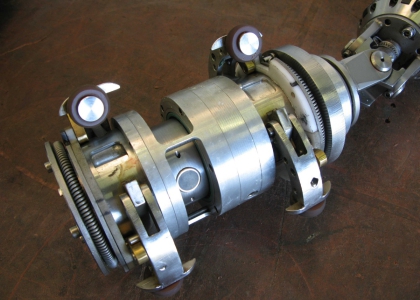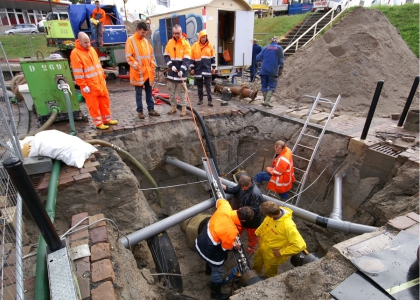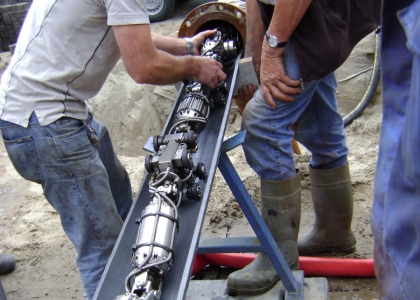Ultrasonic inspection robot checks district heating pipe under a side arm of the Maas. One hundret metres in length and 8 inches in diameter – these are the key data for an inspection project in the Netherlands.
The task involved is a section on the inner-city canal area of Rotterdam, and was one of the tasks to be carried out on behalf of the Dutch energy provider ENECO b.v.
Eneco is among the leading energy providers in the Netherlands, and the company specialises mainly in the production and supply of electricity, gas and heat. It is the operator of the Rotterdam district heating network.
The particular challenge of this special project lay in the difficult external framework conditions and the unconventional course of the pipeline. The pipeline, which has already been in use for decades, comprises several bends with horizontal and vertical sections and is laid in the ground under a side arm of the Maas in the city centre of Rotterdam.
The steel pipeline is part of a network of district heating pipes supplying private households as well as public buildings such as schools and hospitals with heat.
Using the flexible structure of the 6-8 inch ultrasonic inspection robot by INSPECTOR SYSTEMS/ApplusRTD, the wall thickness of the district heating pipe could be fully and completely determined, whereby the integrity of the section of pipe inaccessible from the outside could be demonstrated by inspecting the inside of the pipe.
An opening at one end of the pipe provided the point of entry for the robot with its three drive elements. Once underway in the pipe it was manoeuvred precisely through the pipe network by remote control.
The ultrasonic inspection element for actually checking the wall thickness is firmly connected to the driving units and arranged in the forward area of the robot.
It consists of two ultrasonic sensors offset by 180° which rotate around their own axis. In conjunction with the driving elements they move in a spiral fashion through the pipe. This spiral movement is synchronised with the advancing movement so that complete wall thickness testing is carried out.
On the basis of the positive outcome of the project, further 8-inch pipes in Eneco’s district heating network are to inspected with the ultrasonic robot in this summer.




